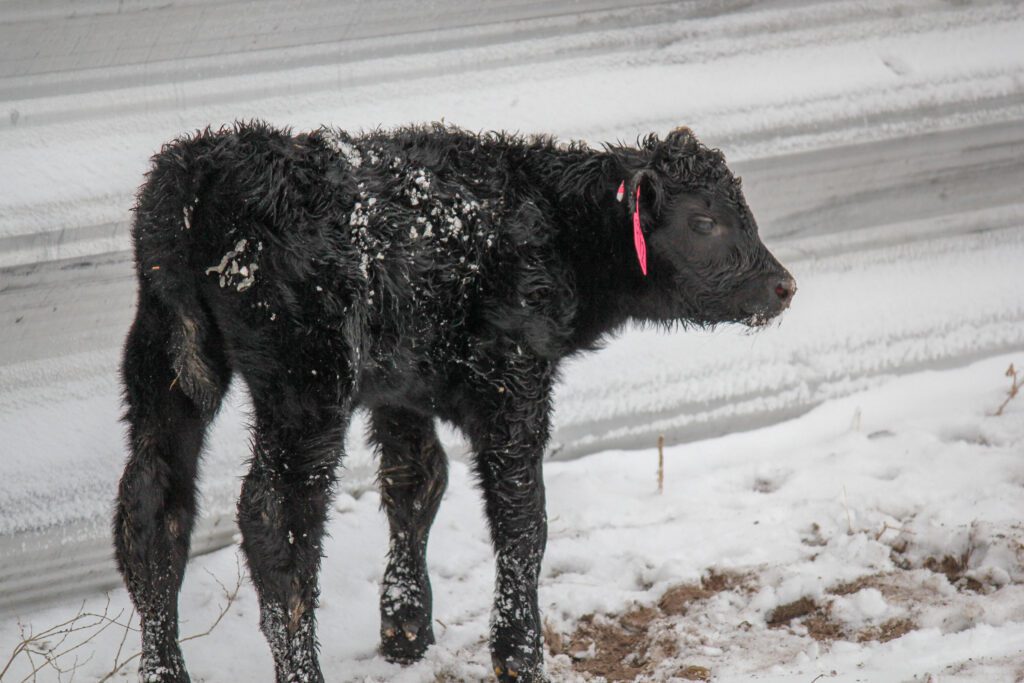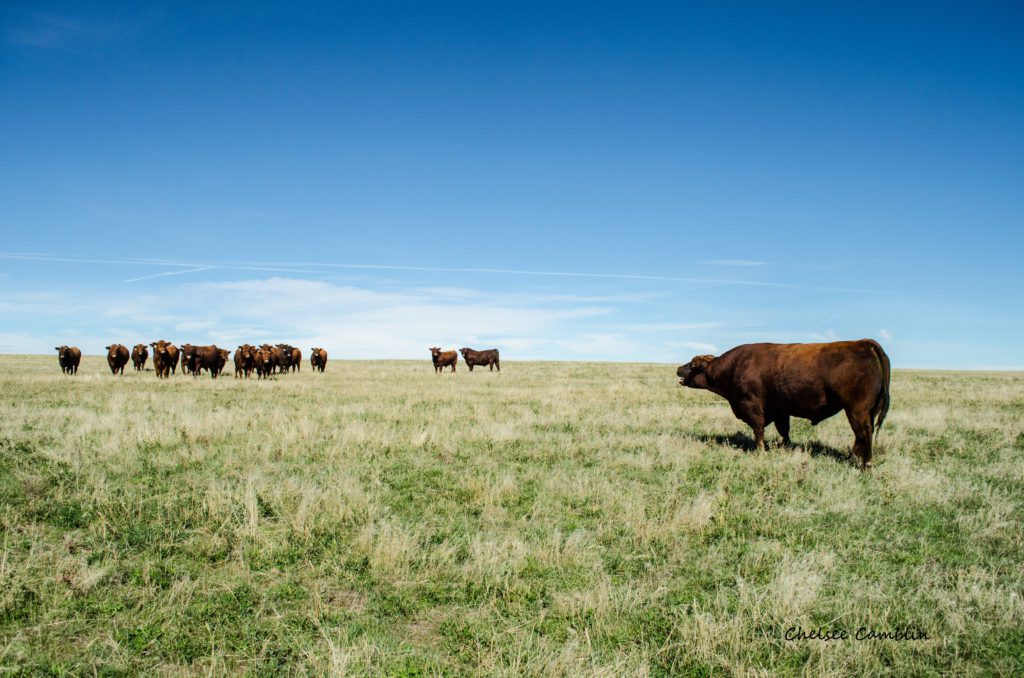Plans for calving season should include how to identify and manage cold stress in newborns. In the 2007 National Animal Health Monitoring System report, 25.6% of operations reported weather as the main cause for death in calves less than 3 weeks old. Preventing hypothermia is vital to survival in the newborn.
Interruptions to thermoregulation
Difficulty during birth, also known as dystocia, can have detrimental effects on calf health. The contractions from the dam create periods of limited oxygen as the calf moves through the birth canal. When the delivery process is prolonged, calves will be born with critically low levels of blood oxygen. These low levels will be corrected when breathing begins. However, severe dystocia calves have such low levels that the respiratory system is suppressed, leading to a cascade of negative events. The increase of blood carbon dioxide levels and the lack of oxygen lead to a condition called acidosis. The acidosis will depress the central nervous system and lead to weak calf syndrome. In these situations, calves are unable to stand and likely have a decreased shivering response, causing hypothermia. Hypothermic calves lack a suckle reflex and fail to ingest necessary colostrum, which will delay the absorption of antibodies and essential nutrients needed for survival.
Management strategies to treat hypothermia
There are several ways to assist a hypothermic calf. This first step is understanding when to intervene. The normal rectal temperature of a newborn calf is 101.5-102.5 degrees F. A simple thermometer will help identify when the calf is in danger. Once the temperature drops below 101 degrees F, steps should be taken to prevent hypothermia. Another tip is to place two fingers into the mouth of the calf. The inside of the mouth of a healthy calf will be warm and moist and will attempt to chew or suck on your fingers. If the suckle reflex is absent, it’s time to get involved.
Consider two routes when attempting to rewarm a calf: external and internal. Colostrum is the first line of defense for warming a calf internally. Comprised of up to 10% fat, colostrum acts as a heat source by burning the fat into energy and maintaining body temperature. Calves that can sit sternal and hold their head up need colostrum to begin the warming process. The best source will be from the dam, but other sources or replacers may be used as well. Ensure records are kept on what and how much was provided to the calf. More information on colostrum can be found at Colostrum 101 | UNL Beef.
External warming can be achieved through commercial warming huts, forced warm air such as the floorboard of your truck, or warm water bath. Never leave a calf unattended while using a heat source as there is potential for overheating. While warming huts are an easy option, they can also serve as breeding grounds for pathogens. Thoroughly clean and disinfect the entire hut before adding another calf. If using a bath, ensure the calf is completely dry before placing back outside.
Understanding the risk factors for hypothermia will aid in developing a strategy to prevent loss. Managing dystocia and knowing when and how to assist chilled calves is an essential part of your calving plan.
Source: Lindsay Waechter-Mead, DVM, Nebraska Extension Beef Educator
Photo credit: Troy Walz








